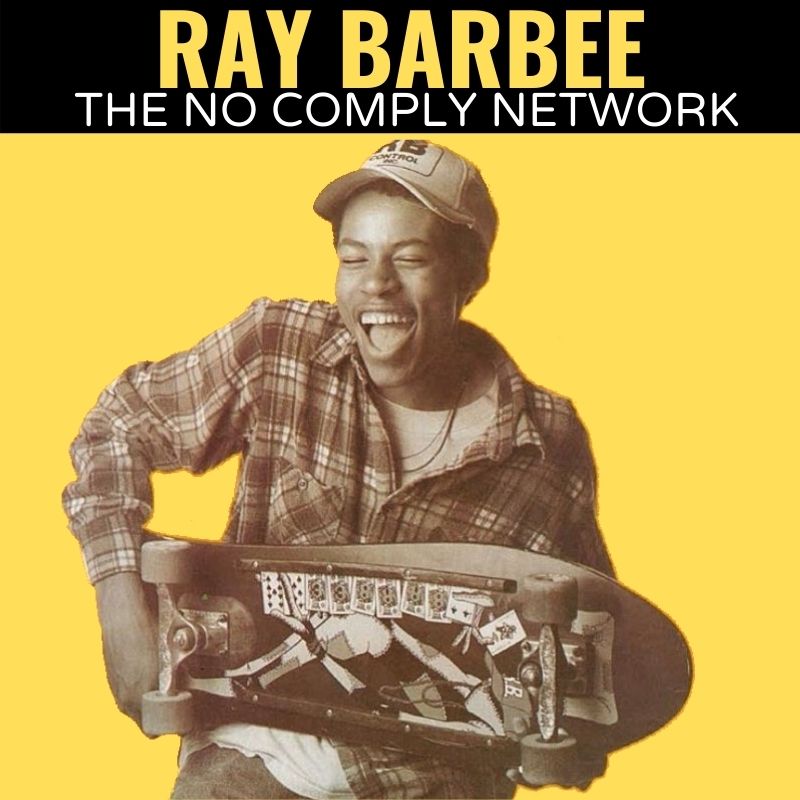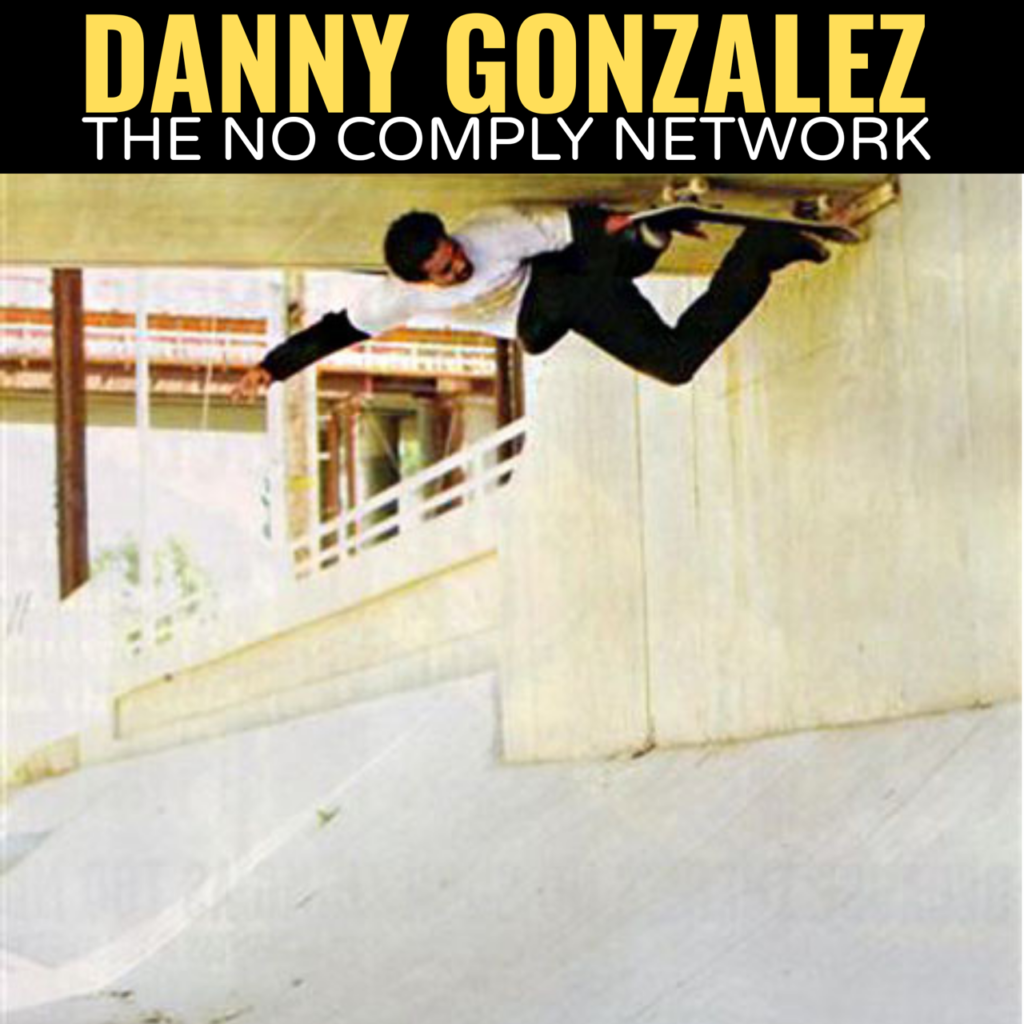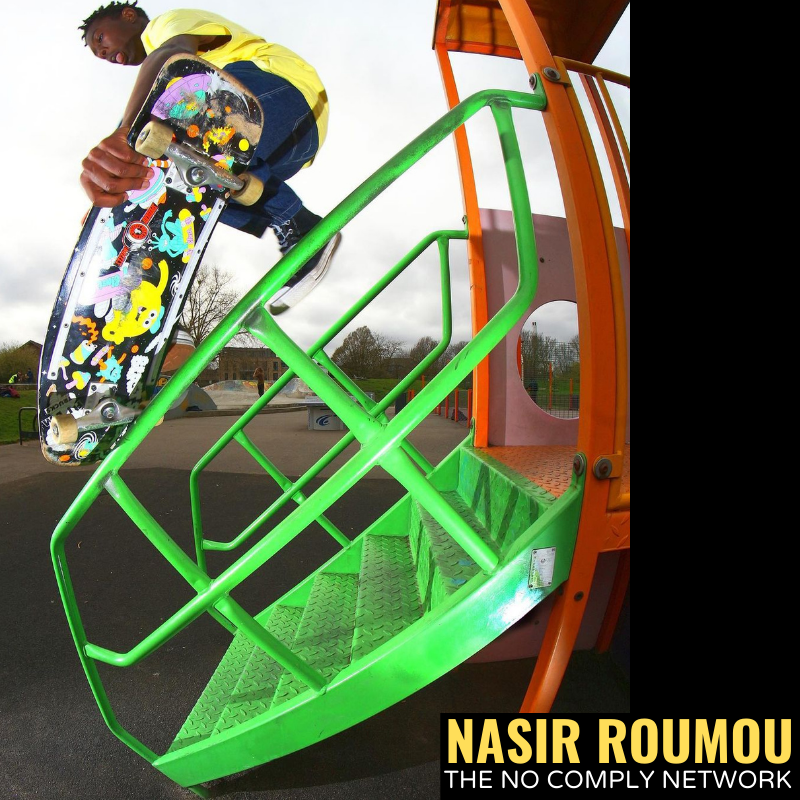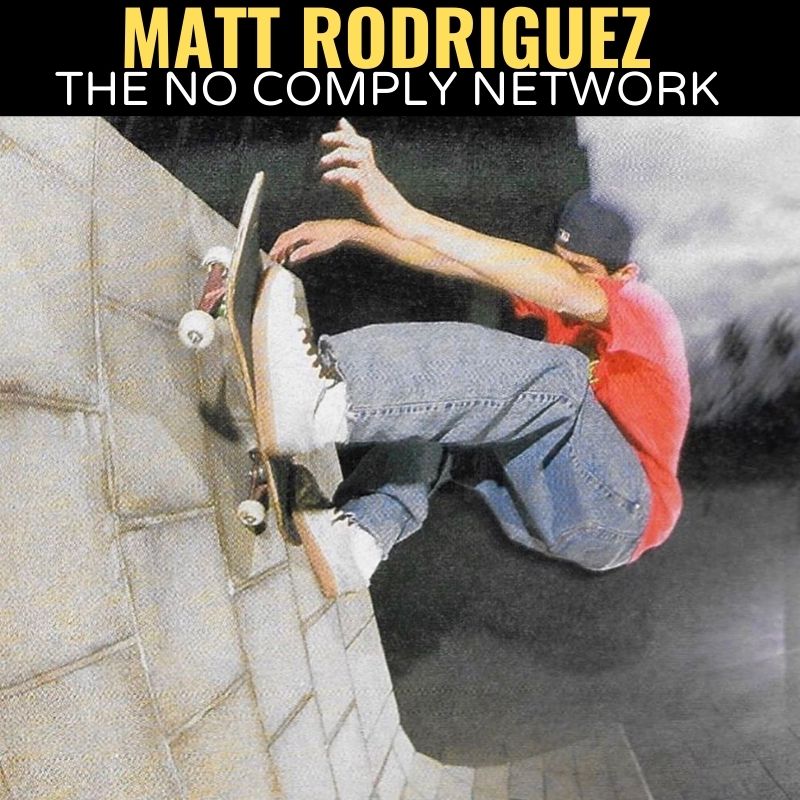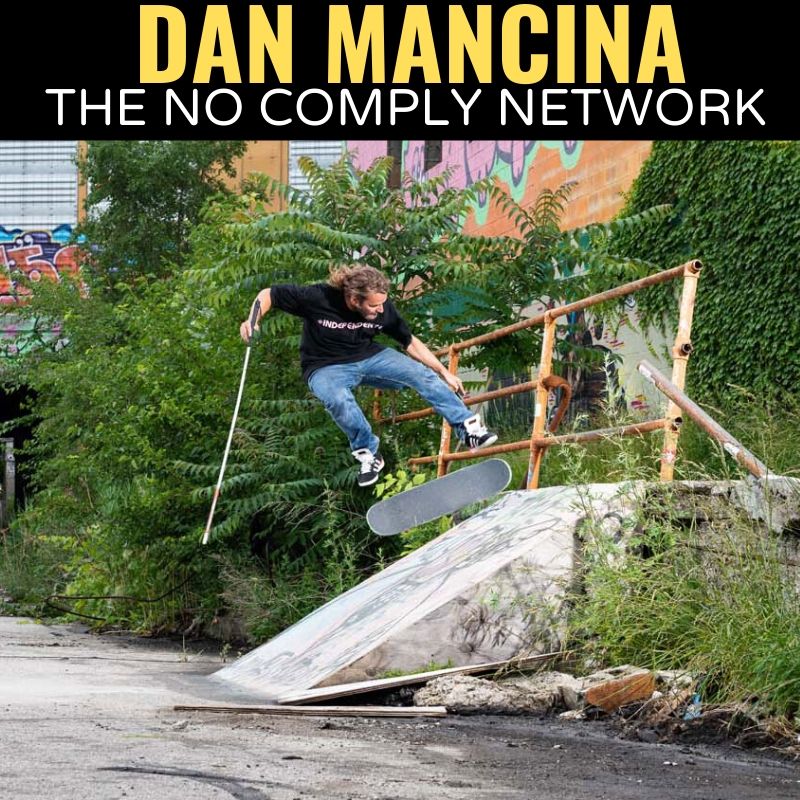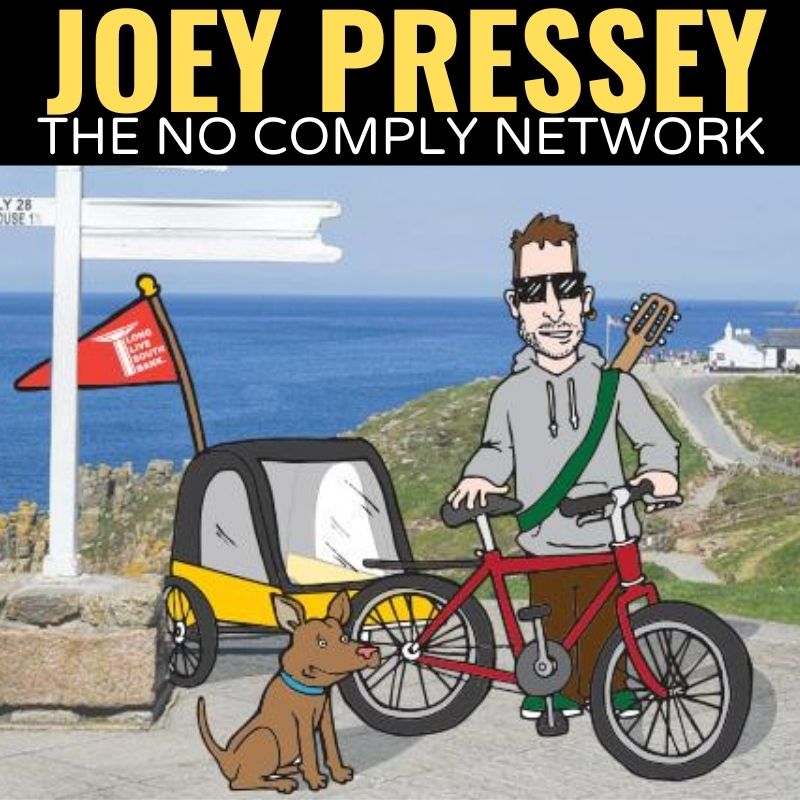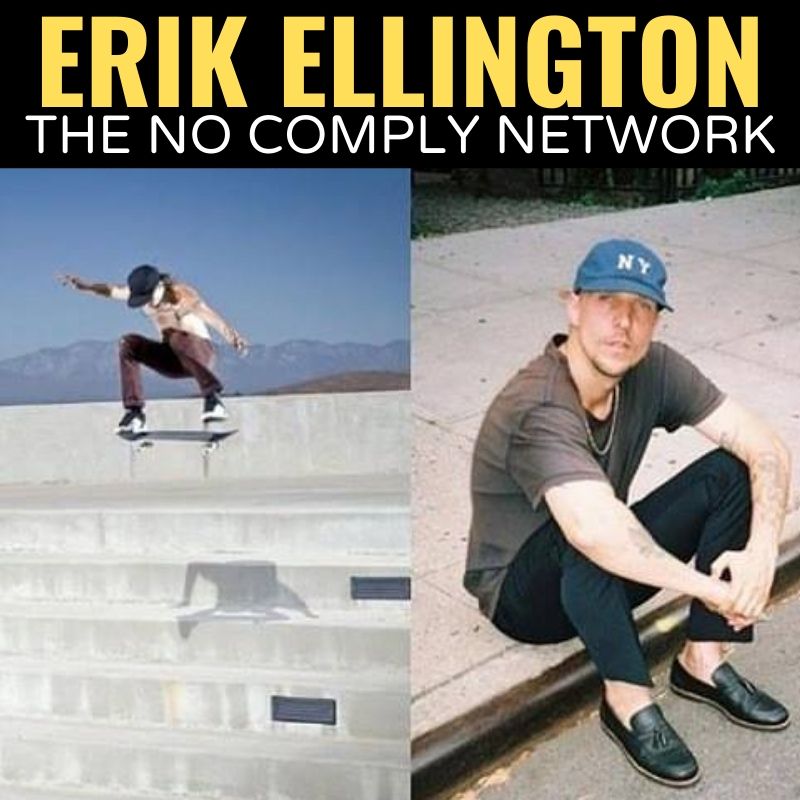Ray Barbee is a skateboarding pioneer and musician who put No Complys on the map in the 90s. If you’ve never seen his video parts or listened to his music, you need to. Just like the soulful sounds he makes with his guitar Ray has been a peaceful and compassionate presence in skating since what has felt like forever.
We are super stoked to say Ray Barbee is now a No Comply Network Member.
We called him up to chat about how he learnt to do No Complys, the true meaning of the trick and his thoughts on its modern resurgence, filming for Powell Peralta’s Public Domain video, playing in bands with Lance Mountain, getting inspiration from Tommy Guerrero, The Gonz, Natas and trick influences from Rodney Mullen, how creative interpration can take us forward on and off our boards, filming for the Firm Video ‘Can’t Stop The Firm’ with Kurt Hayashi and Anthony Claravall, shooting with No Comply Members Anthony Acosta, Jon Humphries and French Fred, getting twisted for Vans’ Propeller video, why he thinks shredding on a board and a guitar are similar, his upcoming music projects and much more.
Read it below to discover it for yourself.
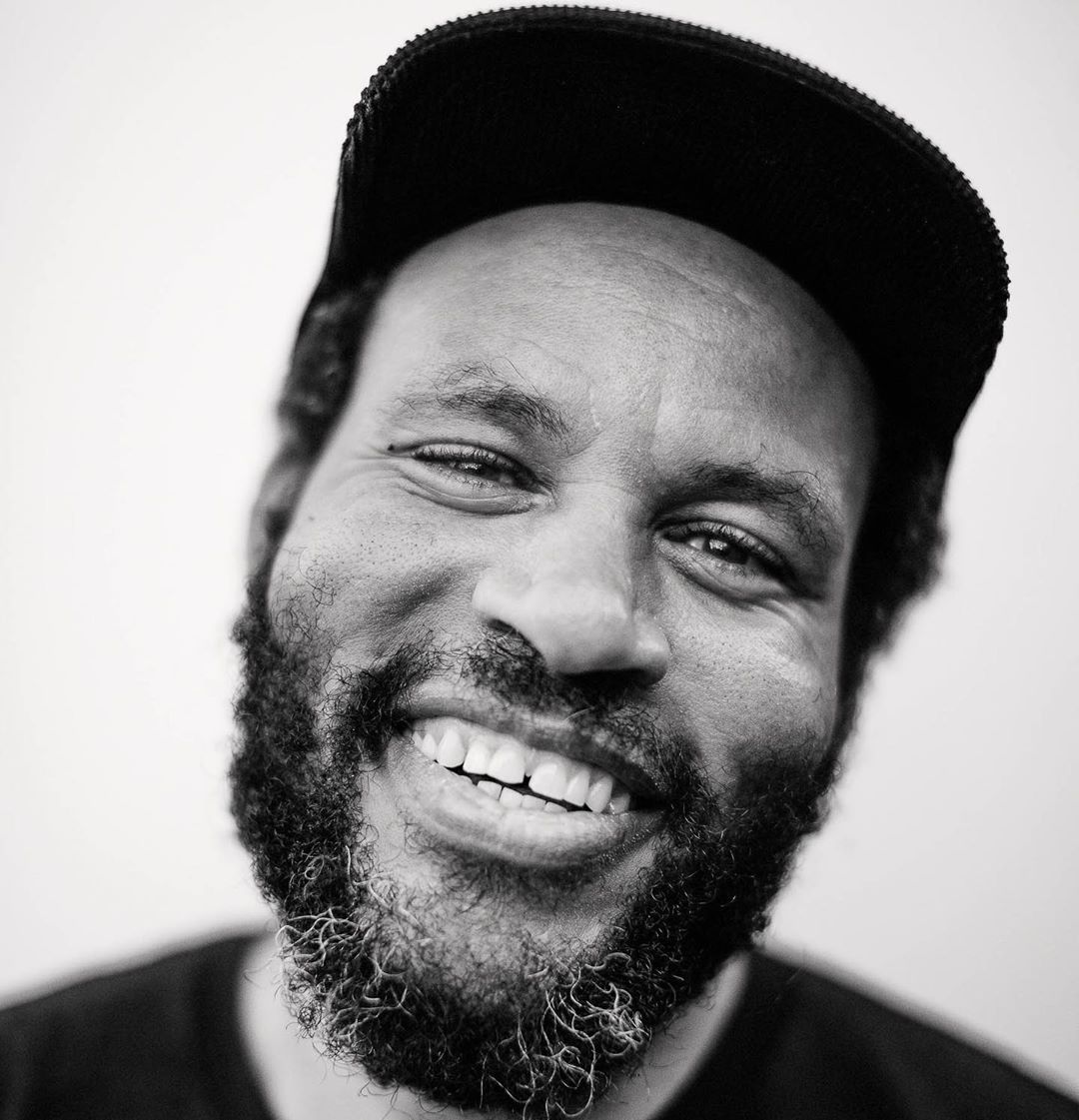
Hi Ray, it’s Jason speaking
Hey, what’s happening Jason! Where you are? Europe?
Yeah I’m in London, England under Lockdown, trying to make things happen
You guys still in Quarantine?
Yeah it’s a 100 percent lockdown. It’s tough but working through it. When I started No Comply, you were one of the skaters I thought about but what year did you start skating?
I started in 1983 and I got into skateboarding because my friend got a skateboard for his birthday and his birthday was over the summer in 83′ and so I tried to skateboard before, I didn’t think much of them because all I could see around me where these banana boards, you know nowadays they have had their resurgence as the Penny Board brand but at the times, all I thought it was was this little plastic, flexible thing.
So that’s what I thought a skateboard was in 1983 but then when my friend Danny got a brand new skateboard for his birthday, his dad used to skate in the 70s and so his dad got him a modern skateboard, it was a Variflex Vectra, 10 inches wide, 30 inches long, dynamic graphic on visually it was exciting looking.
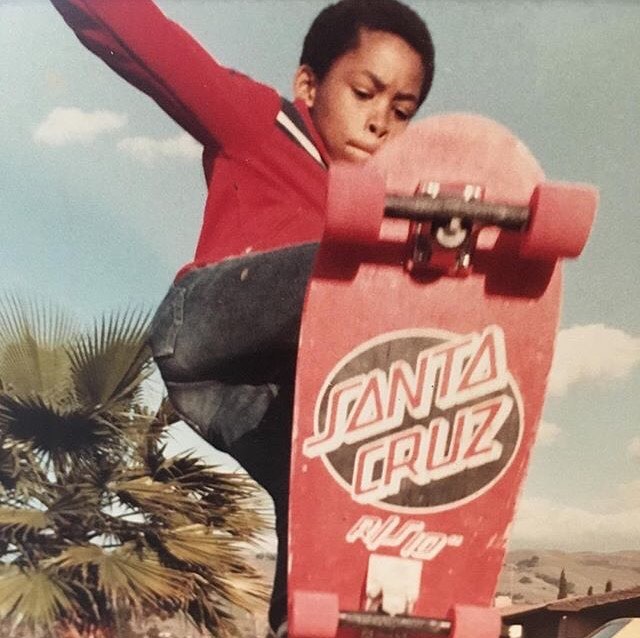
What was the shape? Was it fish?
Well that board wasn’t fish but I don’t know what they called that shape back then, it was just kinda like, it had a smaller nose and went down to the tail but the thing was that it was big, it was wood and it had trucks. It didn’t look like a toy. This looked like a tool; I would put it more in the realm of a mixture of a BMX and guitar. Aesthetically you can sit there and look at it and know you can use it too.
Well anyway, That’s how I got into it, We’d usually go out on our bikes together but then I’d go on my bike and Danny would go on his board and I was like dude, “he’s having way more fun than I am! I want to get a skateboard too!” and that sent me down a path of wanting to ride a skateboard.
I have to stop you there, thinking about your analogy. It’s funny to think about a bike and a skateboard.You’re absolutely right; it’s like a vehicle you can shred. Those two things are similar. It’s taking you somewhere and you can rip on it. I get it.
Yeah, it’s a vehicle you can shred on but I’m more really trying to tap into the emotional connection to the board and connection towards it that you have. It’s far more than just a tool. You don’t do that with a hammer or a shovel, you don’t want to just put that in your room and sit there and look at it, you know what I mean…but you do that with a guitar. I’ll do that I’ll sit there and look at my guitar and think what sounds could I make because like a guitar you can grab a board and work it like a tool and use it to express your ideas and what you want to do with it.
I was more trying to get at that, those parallels the uniqueness of things that have that quality to it, like my camera, some people are ballers, there’s aesthetic affection. Maybe a football player sits round and looks at the ball but there’s always a connection.
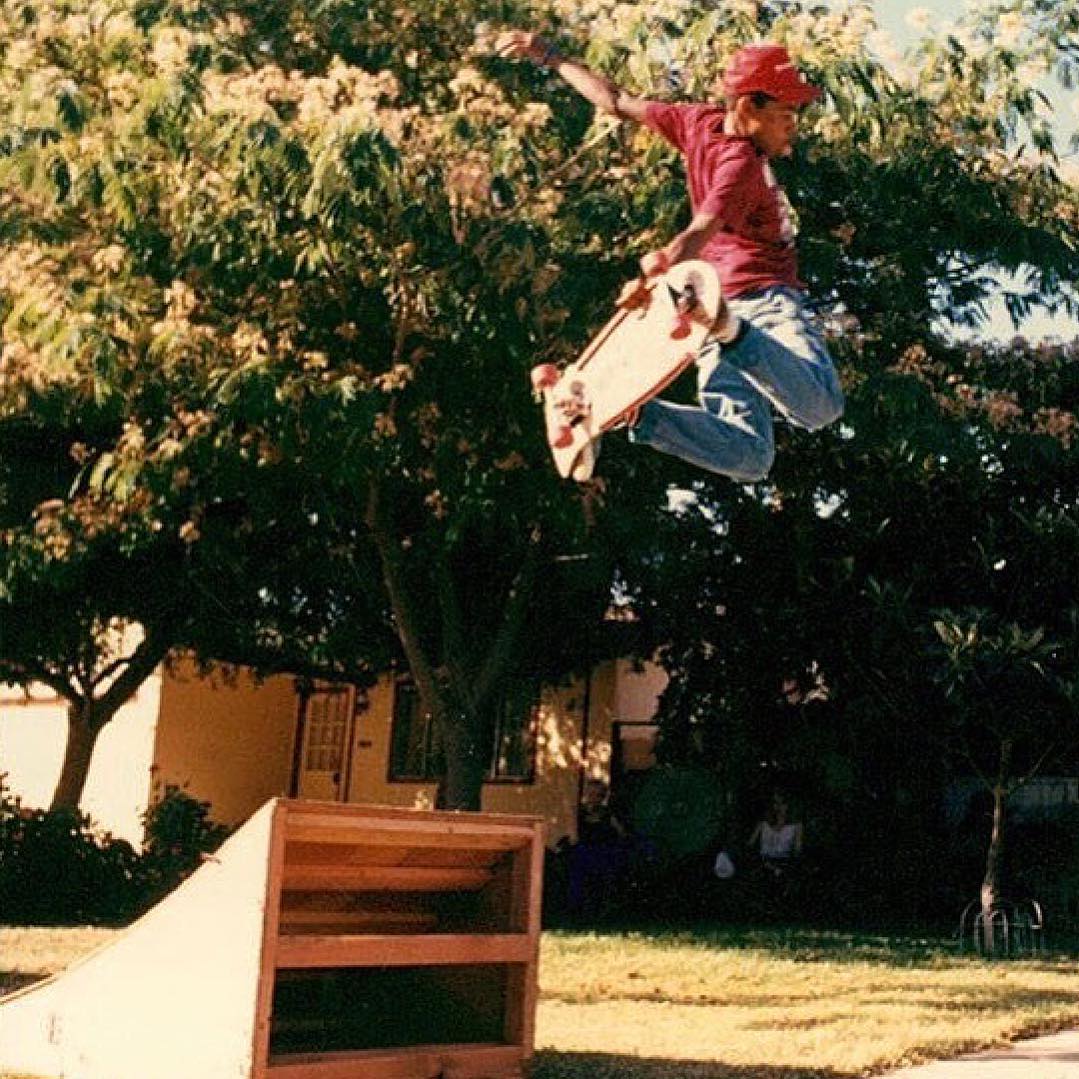
Yeah the best ball players are constantly throwing balls up and down or spinning balls on their fingers all the time.
Yeah so they are doing the same thing, yeah, you know what it is?
What is it?
It’s the dreams that they represent, that they conjure in your mind.
I’m sure, an American football player even, basketball players, dream about what that ball represents, so you dream of being a professional athlete, you look at that thing that becomes the vehicle, the symbolic actual representation of your dreams, you look at it and you go into your dream world.
You look at your board and you go into a dream world of going pro and being good at your board, so that plays a lot into it too, having an emotional connection with the thing that your skating.
Definitely a part of me will look at a board and look back at it daydreaming of a trick, and then on a board it actually worked, you’re always figuring tricks out on and off your board.
Yeah I would sit around on my back, I grew up skating ramps and we were doing airs and things like that, I would sit on my back in the living room, pretending I was doing these tricks out of the lips and holding grabs and thinking ‘ah could I do Frontside Airs like this and tweak it like this’.
So a lot of it, this plays a lot into it, the enthusiasm, the dreaming and everything.
So it was when my buddy got that board when it all clicked and I was like dang I want to do that and the crazy thing was I didn’t even know what that was, I just knew I had to get one and I wanted to do that, I had no idea of the culture and history or creativity I was about to be a part of by doing it.
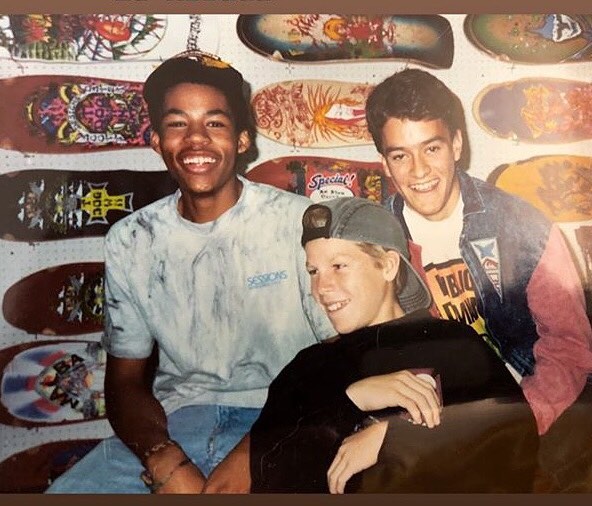
During that time were you shooting photos or playing music?
I wanted to play guitar before I saw my buddy skate, I wanted to be a guitar player, a year before I got into skateboarding.
Rad.What made you want to get a guitar?
The thing is I didn’t know anybody that played a guitar. But the thing that inspired me to get a guitar was that MTV had come out.
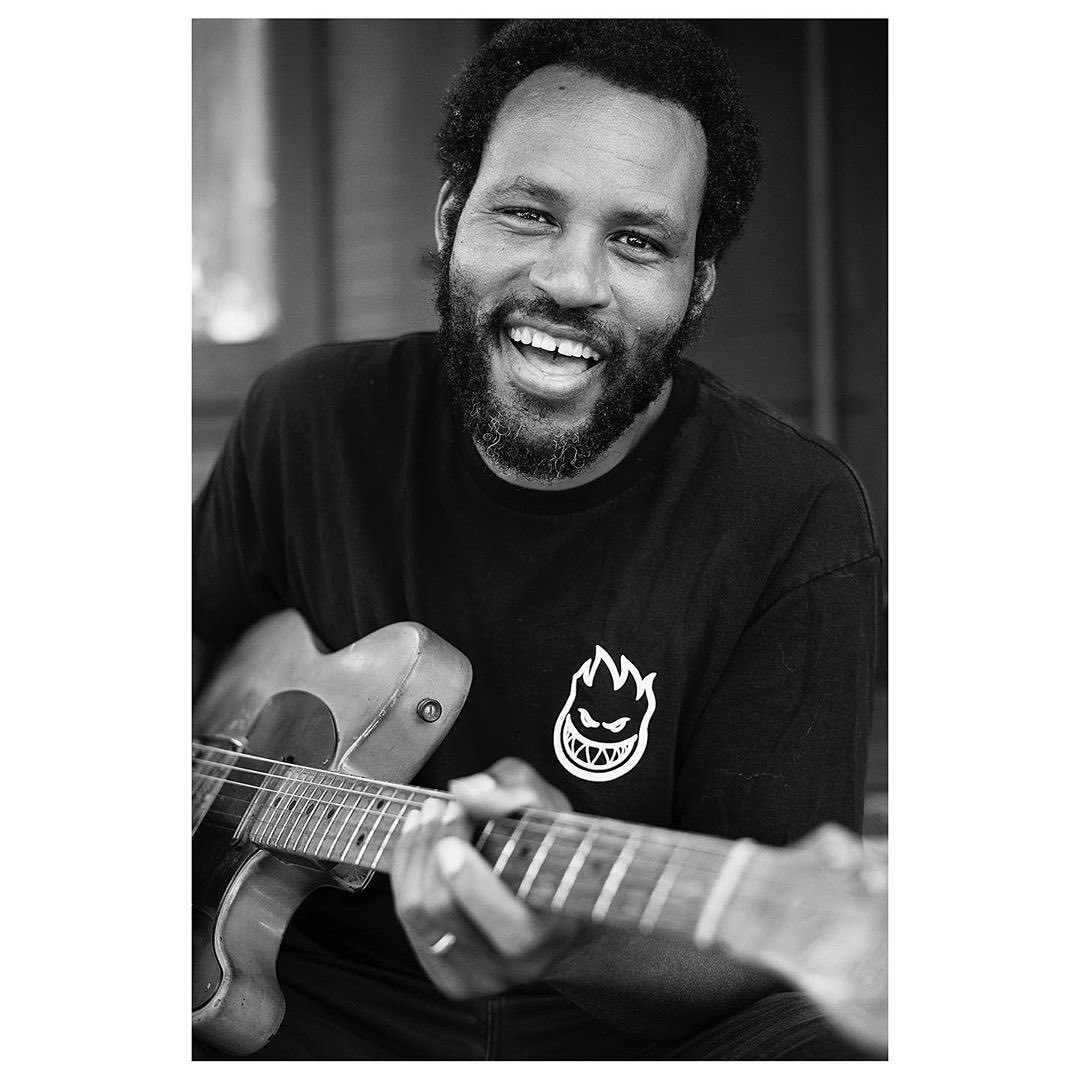
Right. How did MTV play into everything?
So in 1982, MTV started. I was in fifth grade when MTV came out and MTV had a very ambitious model, that they wanted to be and I say ambition, I was in 4th or 5th grade and their business model and their mission that they had was for it to be 24/7 all-music and so I say it was very ambitious because it hadn’t gotten to the point where the marketing was for the labels and the bands and the artists, they hadn’t started doing music videos yet.
What did they play at the time?
What they were doing was showing you a lot of live concert footage and I remember seeing a lot of metal bands, rock bands, some soul and some R&B but mostly Rock and Metal.
I’d see Iron Maiden concerts, Ozzy concerts, before Metallica I think, Scorpion and so anyways Van Halen and the list goes on.
So I quickly became enamored with the guitar hero, I’d see the singer in a band and I was like he’s the main guy, then the singer would start, then in the middle there would be a guitar solo. The singer would step back and another person would step forward and it was usually the guitarist would take the limelight doing a solo.
I was like that dude is cooler, there was something about all of it, where I was like I want to play guitar so that started about a year, a year and half before I started skating. I would tell people that I wanted to play guitar before I skateboarded but it wasn’t until I skated that I was afforded the opportunity to play guitar.
So it was the accessibility of the community of my skater friends being in punk bands and meeting skaters playing in punk bands that gave me the opportunity to play a guitar. Before I skated I didn’t know anybody that played the guitar. People had acoustics but nobody who I knew before I skateboarded had electric guitars or played in a band or anything.
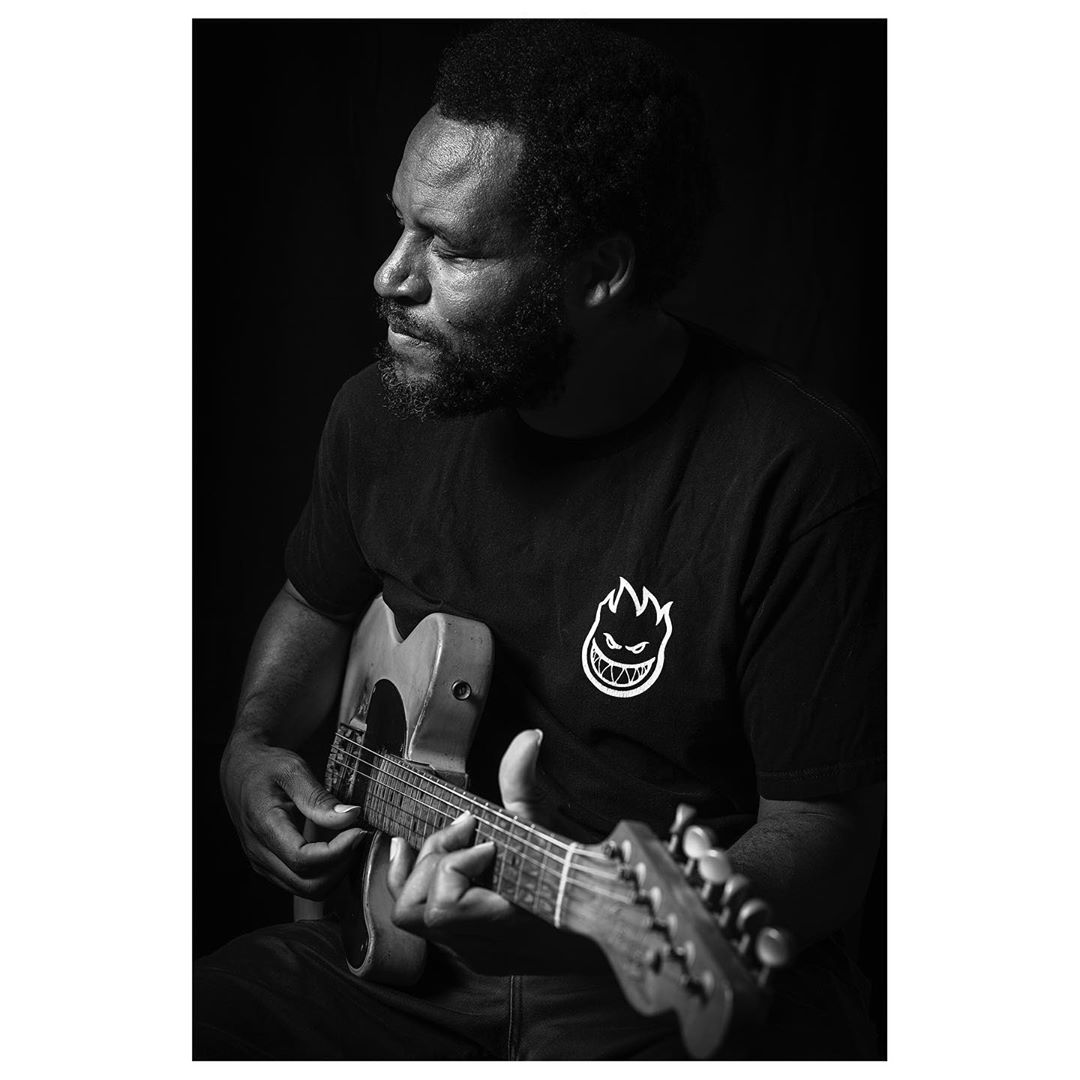
Sounds like your passion for skating and music enabled one another and put you on the right track to do both. Glad I asked.
Playing guitar took the backseat for years, because of the progression and momentum of skateboarding.
Skating was always the main thing for me. It wasn’t until high school that I picked up the guitar a bit more and try to progress and the desire has always been parallel but the wood shredding development wasn’t parallel.
Skateboarding was everything and playing guitar was always backseat and not even there for years. It was something I’d always come back to.
I was in high school and I had some friends that didn’t skate but played music and I started talking to them and I like made a promise to them to play with them one time as I said I used to play guitar and they were like come jam with us.
Also, Lance Mountain was in a band, called The Republic, Eric Castro was playing guitar and also his high school friend Louie was in it, they were in a trio, when I got on Powell Peralta, which was high school for me, I’d skate Lance’s ramp after school and they’d have practice after
We would hang out and then pretty soon I would get invited to jam and learn the songs with them.
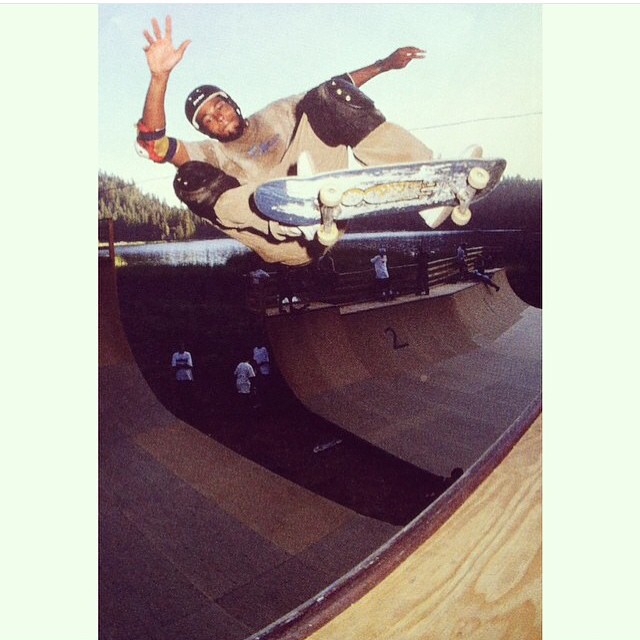
It’s amazing Lance played part in you developing your skating and your music, that’s rad. How old were you?
I graduated when I was 17, I turned 18 in 1989, you know what I mean, freshman year, I was like 14, freshman at High school.
That was at the transition between vert skating and street skating. When did you start to skate the streets? Your Powell videos and footage from that era is iconic.
It’s funny because looking back, at what allowed me to push towards interests and push towards the desire to want to do specific things, what I’m trying to say is, when I think about what got me over the hump of having a curiosity and interest in something, and what got me involved in it, in a position to function within it, always come back to accessibility, accessibility is everything.
When I go back to watching MTV, MTV helped created a desire in me to want to play a guitar. But then when I got into skateboarding, it became accessible, I got in after the 70s park eras that ended because of insurance premiums skyrocketing, and these parks couldn’t stay in business so they got demo’d, right?
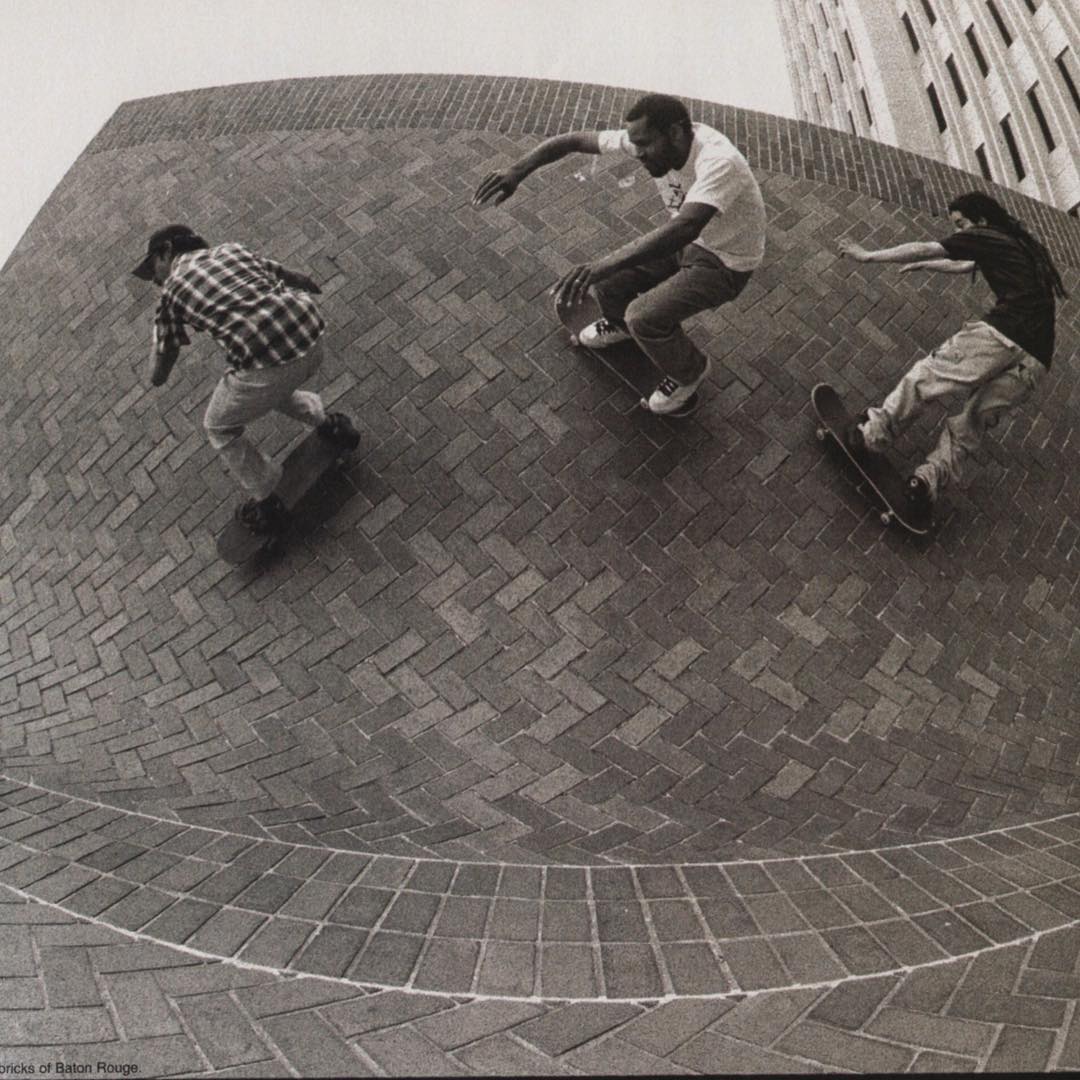
Right but there were other places to skate?
Yes but only for people who had the resources financially, and support from ‘grown ups’ or their parents to support their interests. What I’m trying to get at is that to have a ramp in your backyard is not cheap, your parents have to be able to own their home, most likely, and also support your desire to skateboard, having a ramp in your backyard along with having the finances to support that ramp. So that excludes a lot of people.
So, although I came up at a time where backyard ramp skating was popular, you always had to know a guy who knew a guy who had the ramp.
So where did you learn to skate?
We built a ramp in my friend Mike Griffin’s backyard and that became our place where we learned to skate ramps but as you get better and you want to skate bigger ramps or other ramps, there’s always a process you have to go through.
How do you mean?
There was always a gatekeeper. So for me what happened , one day I was skating this guy’s ramp and I was doing a body jar, a backside air where you grab the nose and when you come back down, you hit the tail and go back into the tranny but on this one I missed my tail and it flung me and it was an 11ft high ramp and I fell to the flatbottom and I broke my wrist.
Fuck. Did that make you not want to skate ramps anymore?
Well, back then basically street skating, because of the videos, was always what you did after it got dark or your neighbours would tell you ok, you have to stop skating your ramp now!
You’re just hanging out on the streets, skating a curb and your just pretending your still on the ramp, all the ideas from early street skating all come from the ramp and a lot of that came from the videos we saw when we were growing up, so if you think of those Powell Peralta videos, those dudes, the real work was, the footage of them skating the ramp.
And then they would be dorking around, skating gas station curbs, the double sided curbs, Lance Mountain skating down the street and linking up with everybody.
Street skating wasn’t called street skating back in those times watching those videos that I’m reflecting on, it was just what you did when you were dorking around, it was just fun and not taken seriously at first and then what happened to me on that ramp slam, my parents took my board away because they didn’t want me to break my wrist again!
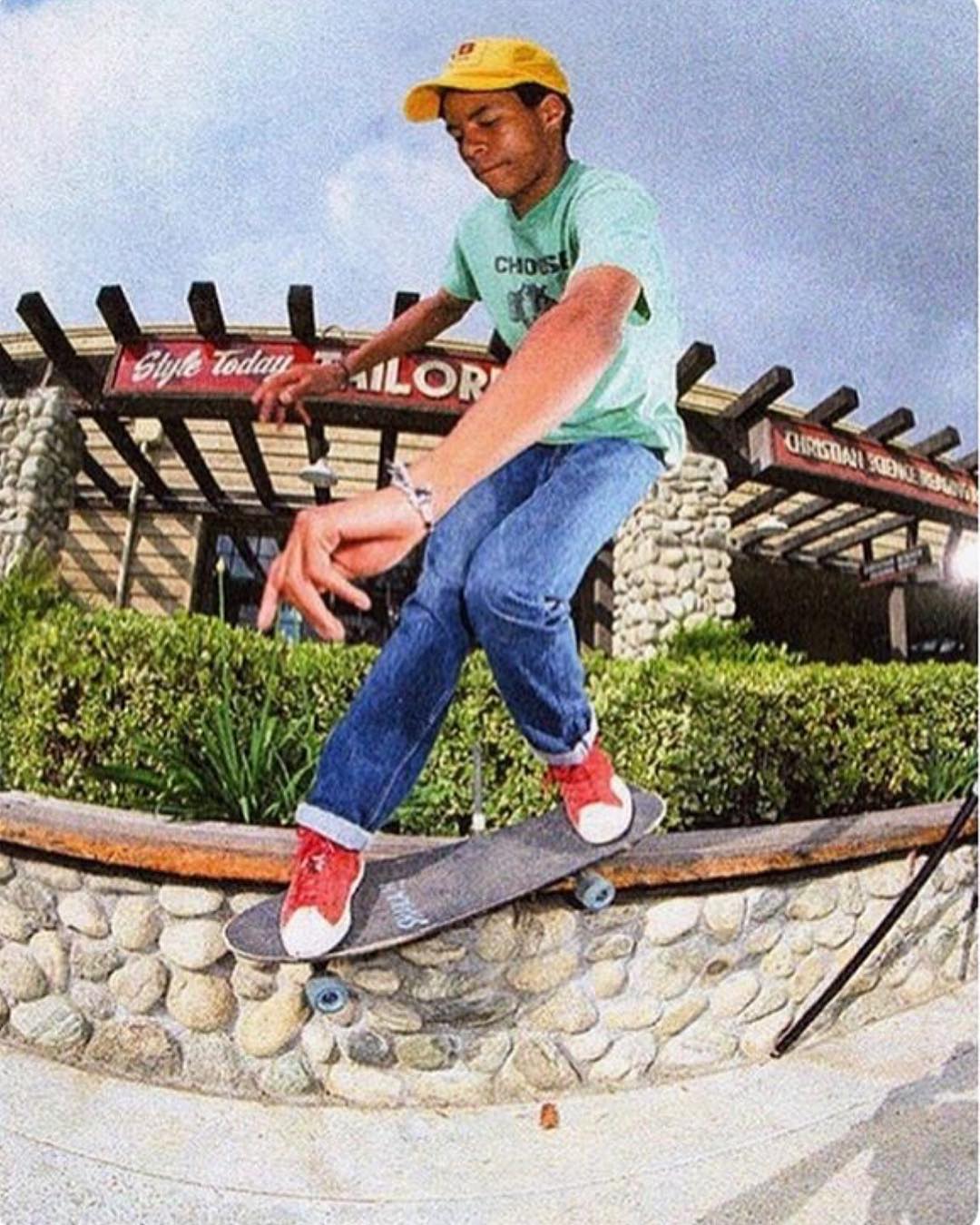
Fuck, what did you do?
Luckily my friend had a backup board but I couldn’t go far to skate the ramp I had to stay in the area and during that time we’d go and skate street a bunch and then during that time, guys were taking jump ramps over schoolyards and jumping out these jump ramps.
So it was during that time I had my cast on I was like skating street is way more fun I could tell right away there was way more freedom in it, not only do we cut out the gatekeeper and I don’t have to ask somebody If I can go skate their ramp or not, or hope that if I go tagging along with a friend he’ll let me skate too, and not only that, I was like woah! I can skate whenever I want and don’t have to answer to anybody or ask anybody.
Then, what I realised to, was that street skating was super open, the thing about skating ramps; the list of tricks was so long, there was already a list that we were checking off.
You go through and learning everything. like OK what am I am going to learn now?
I think I’m going to start working on inverts and you learn them and you check them off. And then you’re like I think I’m going to start working on backside airs, get them down, check them off, and then street it was like…
New territory?
That list was blank at the time!
It was super like, I learned to Ollie, I learned to Kickflip and then it was like, what else? It was super open, it was whatever you wanted.
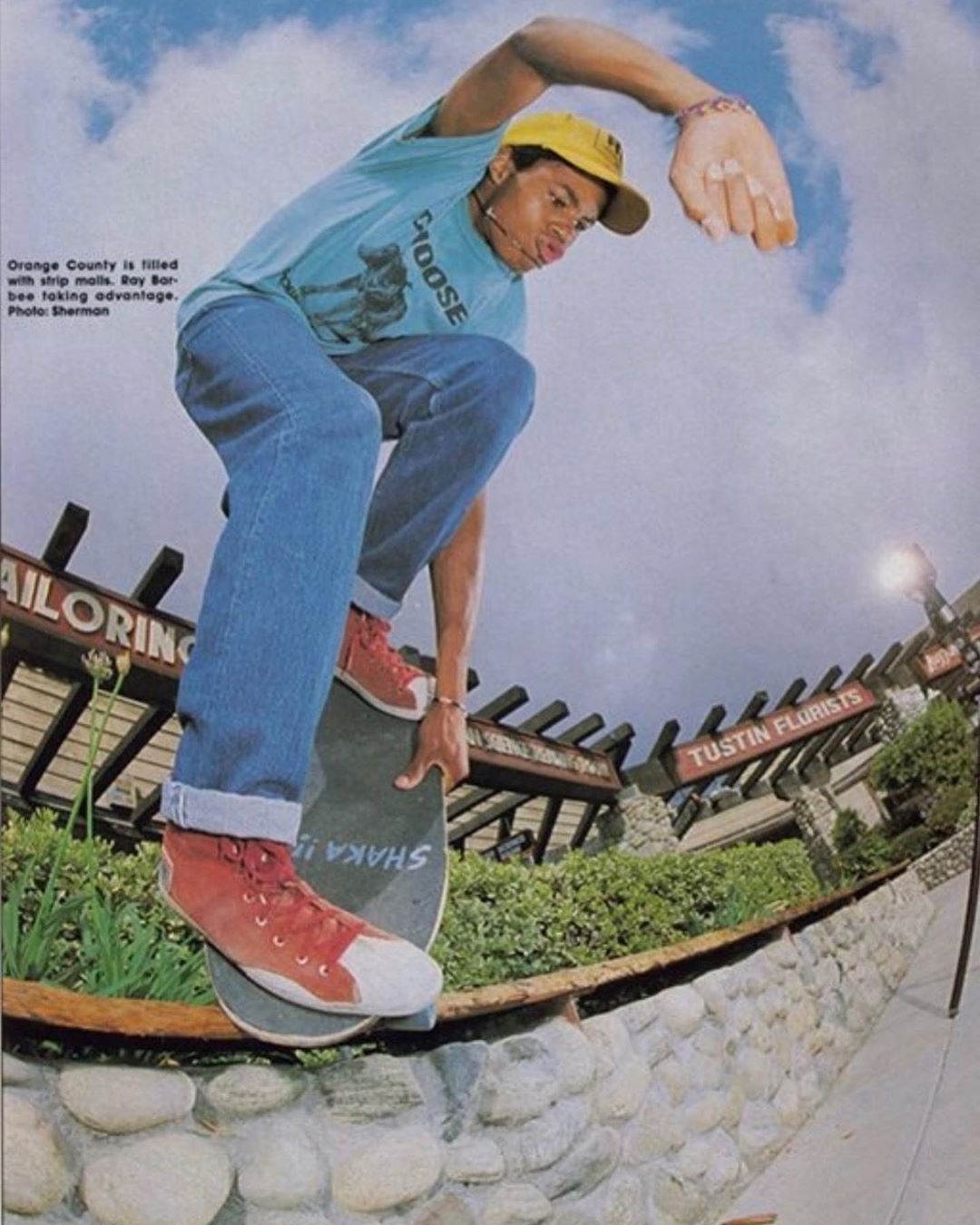
Rodney laid down the blueprint for that next wave of skating
That was the start of where I don’t know in the timeline of things where we were and skateboarding was generally but I do know that we were seeing Tommy Guerrero, Natas Kaupas and #MarkGonzales in the mags at the time and we were seeing Capitola Classic, a street contest in Sacramento.
There we saw the street thing, we knew it was new but we were very aware and we were looking at guys who we looked up to as street skaters. Back then most of the pros were vert skaters but could skate street. Street contests back in the day were 80 percent vert and street guys and the other 20 percent were just actual pro street skaters.
We’d be looking for guys who were specialists at skating street. l’d be like, look at his board it’s made especially for street, we knew we were heading down that route, we are street skaters, we’d still skate ramps and everything but it was clear that our passion was towards to skating street.
That must have been exciting, getting into learning everything whilst it was being created and being able to put it out there.
There became a time when we started looking to Natas, Tommy and Gonz but Rodney Mullen was in there too we started looking to Rodney for ideas and it was at that point when it really disconnected itself from the vert approach to street skating it was theirs but it was Rodney’s ideas that started to pull away from those ideas.
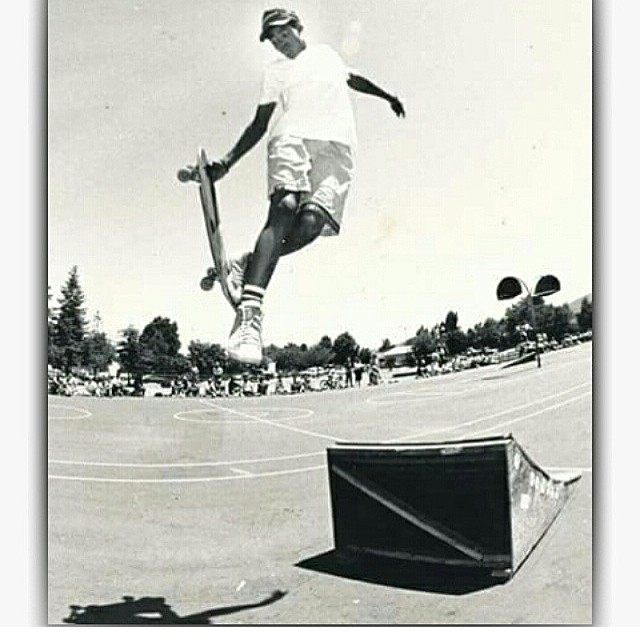
Rodney took Freestyle and gave it to the world in a way everyone wanted to try. He made freestyle cool.
When we stopped to look at everything in skating, we looked at Rodney’s ideas, we made conscious decision about what he was doing and picking things that we saw him do, so we picked things that we thought we could do but obviously we couldn’t do everything because his ability is amazing and we weren’t privy to everything that he was doing at the time but we were cherrypicking stuff that we saw him do that we thought would look good on a big board. It was more of the movements then the side of the board stuff
Like what is Rodney doing that would look good and feel good on a big board?
What did you think about Freestyle at the time?
We were not into freestyle at the time. We respected freestyle but we weren’t trying to do it on a big board, like what is Rodney doing that could work on his settings, not everything could work, too freestyle, what could translate and what could we translate and make our own. Almost like musician’s covering another musician’s song, I always love the ones when people make their own thing.
Like Devo covering ‘Secret Agent Man’ or Devo covering ‘Can’t Get No Satisfaction’ they made it their own. We were trying to make Rodney’s tricks our own but we’d just pick certain ones and so it was at that point, the direction of it started to take a different direction, mentally for us.
So instead of checking things off, at this point, you were pushing things forward, when did No Complys come into the picture? Do you remember the first No Comply you saw?
Yeah so what’s so interesting about the No Comply is that the first No Comply we’d seen was by Neil Blender in the magazines and in the videos, there’s a contest video where we’d seen Neil Blender do them. He’d use a parking block to boost them. First time I’d ever seen the trick.
But for me we weren’t really doing it that way.
My and my friend, Robert Torres, he was my best friend at the time we lived in San Jose California and we’d take the greyhound bus to Sacramento and it takes about two and a half hours but on the greyhound it make it like six or something, or something and we’d go Sacramento and skate with our friend Randy Smith.
There in Sacramento was a whole skate crew that we were super exciting to skate with, because were all like these guys are just pure street skaters and so many of our ideas came from skating with those guys.
Randy Smith from that crew was the first person I actually saw do a No Comply but he called them Step Hops.
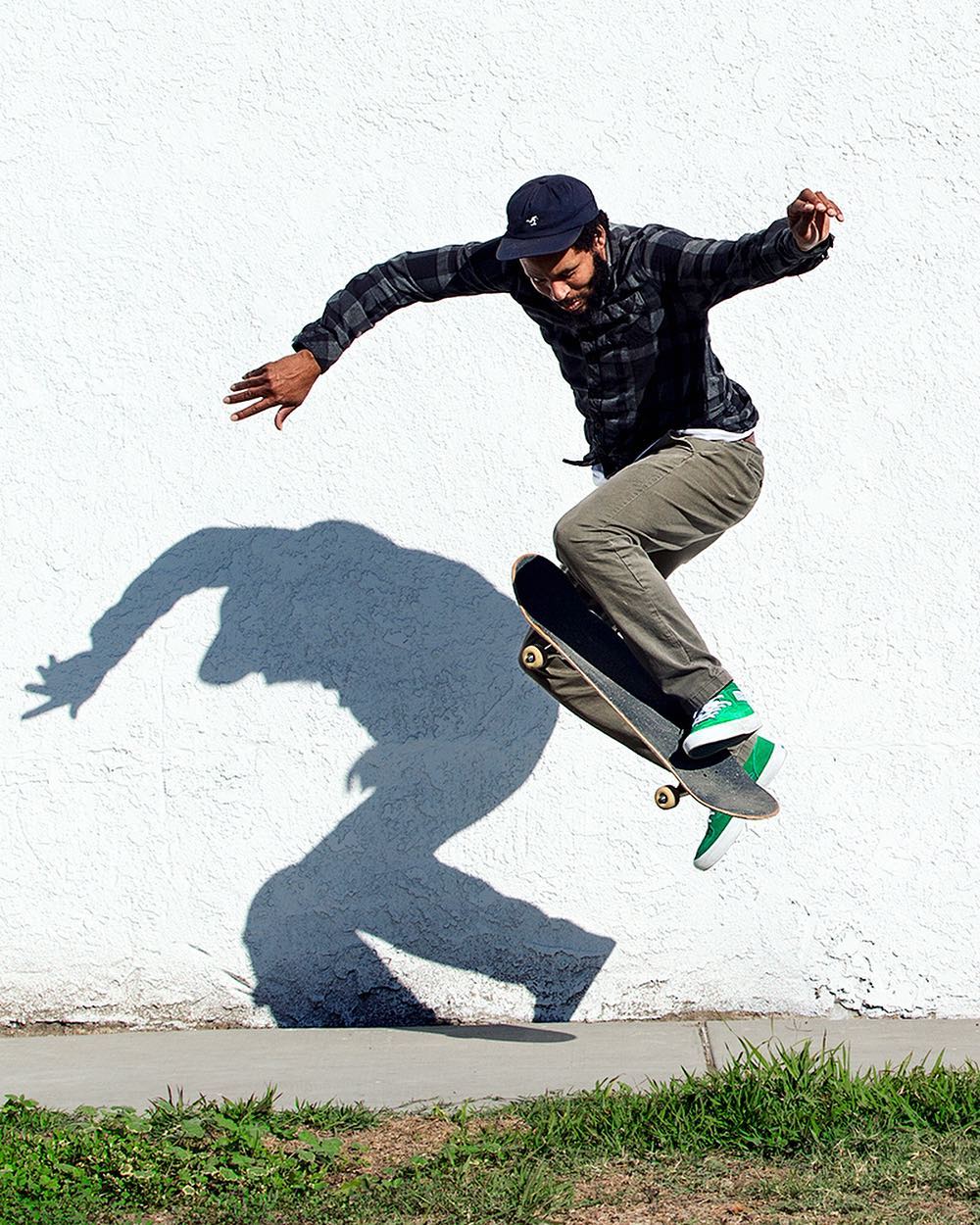
Right, what was that like to see him do one at the time?
He didn’t use a curb, he treated them like Ollies, so you don’t need a curb to ollie but back then he was doing straight Step Hops onto benches to Frontside 50-50, He was doing Step Hops off the flat onto a bench and then he was also doing Gazelles, that was another one we got from Rodney Mullen, you jump off the nose and go 180, the board does a 360 and you hit the back truck and do the last 180.
So we learned Step Hops from Randy and I saw him do straight ones and 180 ones and then we just learnt going 360, going backside, shiftying them and bringing them back.
Twisting it in your own way
We started augmenting variations but it all stems from the initial one, snapping it off the ground, none of us ever used the curb and Randy called them Step Hops so we always called them Step Hops.
Right. Who actually invented the No Comply?
The history of the No Comply from what I’ve heard is that John Lucero did it off a parking block and Neil Blender saw it and Neil Blender said “No Comprende?” As in I don’t get that, I don’t understand how you landed that trick
Okay, I’ve never heard that origin story before…
But then people turned it into a statement, like we’re not going to conform or comply but I think the true meaning of it is like what the hell did you do? You just did a boneless without grabbing.
No Way. I’ve never heard that meaning before. Stuff like this is what keeps skate culture interesting.
What’s really interesting is that you have some people who are very methodical about their language, it’s funny because being in the industry there’s certain words that are like wow, this sounds so marketing it kind of sabotages words, the definition changes, but words express the same thing, to different people, without hearing these catch marketing terms is what I’m saying is.
So how people approach their expression and their art is their motivation and how they want people to see that they are “not complying”, that they are different but then you have certain people who take their ideas and desires and it totally reads naturally for whatever reason.
Agreed.
For a lot of people, it’s like breathing, they’re doing something because they want to do it and they have the desire and the ability to do it and then you have people looking at it and they see the response to it and the response that motivates them to do that same thing and that is also interesting,
How do you mean?
That dichotomy between the two is interesting because I think the first one has the pioneering aspect.
But these are all just ideas I clearly want to express as I’m still trying to figure it out, that I know nothing but these are things that I think about.
Sometimes I’m just like huh when I think about how people can take that moniker ‘A No Comply’ and apply it to their thing when the initial intent was a different thing.
The initial thing just happened, Neil’s natural response and his creative goofiness by saying ‘No Comprende’ was followed by thousands of people saying we don’t comply and I’m doing this to show how alternative I am, which is not wrong but is very interesting about how it changed.
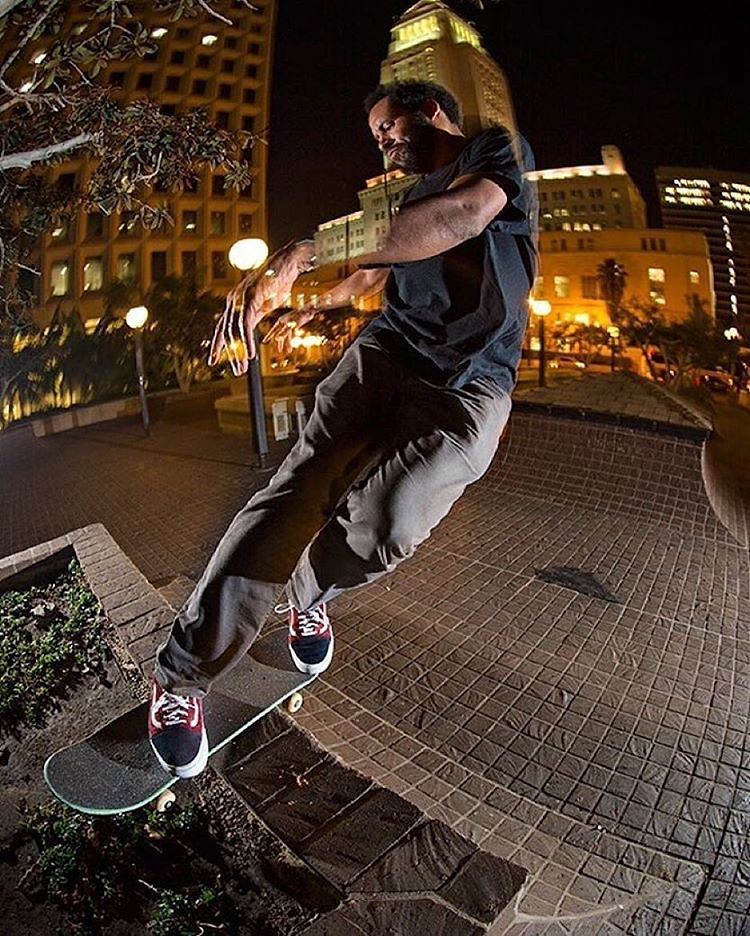
For sure, its funny how meanings can change.
Nothing’s wrong with it all, it’s just inspiration, I’m just curious about how definition changes.
Earlier on in 1994/1995 I was a skate councillor at YMCA skatepark in the sequoias, we were doing specific staff training for unity and team building. There was always this thing that we’d do there would be 13 of us and then we’d make a circle with each other and then somebody would start of whispering something off into someone else’s ear and then you’d have to send the message along and by the time it got back it was completely different to what originally started. It was completely different to what was originally said.
Yeah, that game shows how a story can change.
Right and you know how it changes?
How?
It’s the interpretation, people hear what they want to hear, it’s at that point it becomes distorted. Ah this is kind of nerdy stuff,
Nah this is cool
I don’t think about this stuff all the time
It’s good to think. Kids who are out skating now learn a lot quicker because they have visual examples.
I think about that as a shortcut, let’s say you find a skate spot, or let’s say you purposely went out looking for a spot and you went out looking for a good spot to film a trick or shoot a photo and you spend all day and you finally find one and you’re like cool.
Well you want to tell your friend to go skate it, you tell your friend and they get your direction and they don’t spend all day to get to it. They go there right away.
So when you’re creating a trick or innovating it’s the same thing, you have to think it up there’s time and you’re putting time into it. By the end of the day, with both, you start to doubt them, just like looking for a spot; you’re never sure if a trick is there or is even possible.
There have been a lot of tricks like that for me in the past.
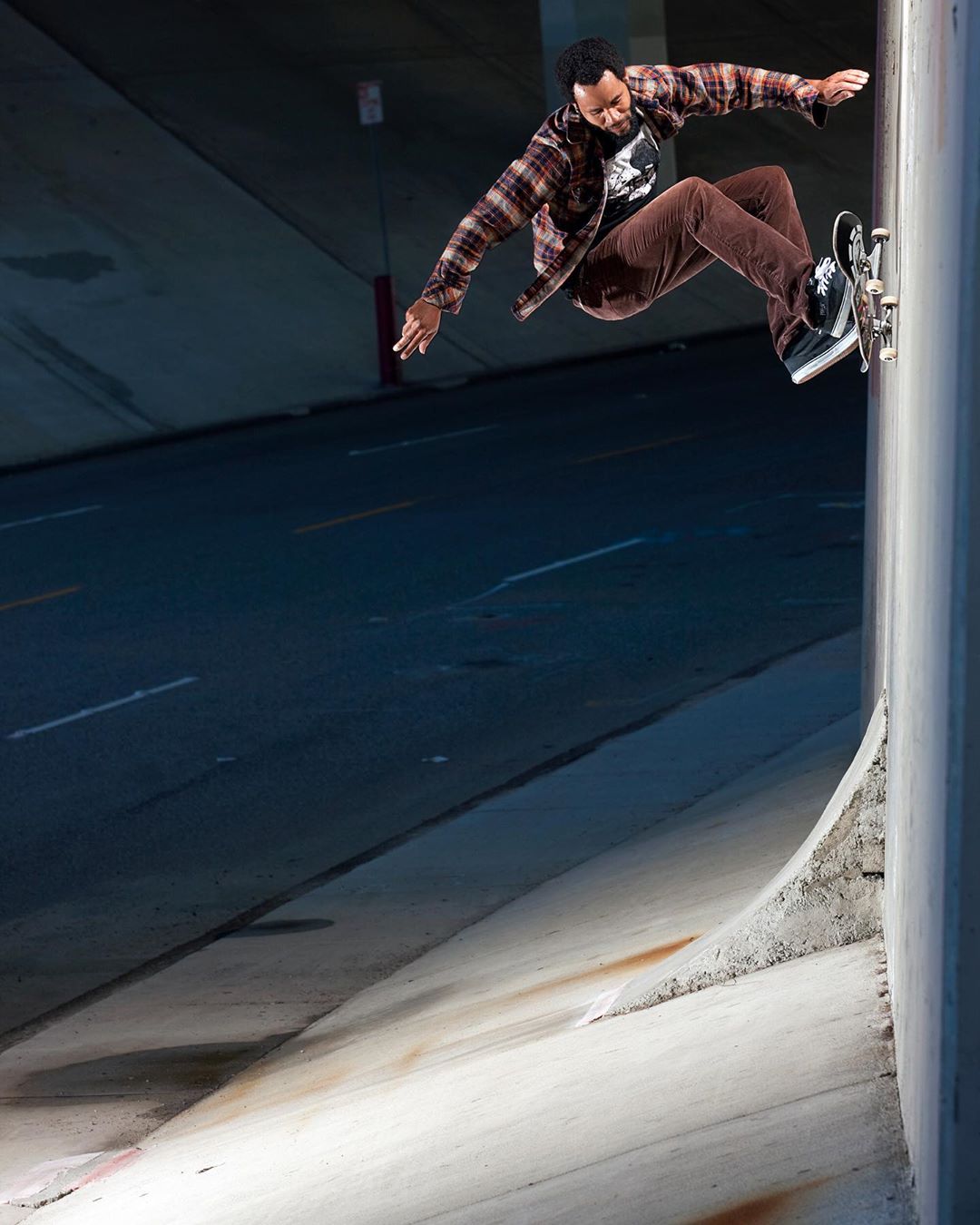
What trick has been like that for you?
In Propeller I did a backside 360 Step Hop in the air without pivoting. I’d never seen anybody do them from the side. When I do backside Step Hop, I step-off and kick off from behind the board so it’s a weird twist, kinda pretzel, the way you have to yank it is different, and you’re scooping it.
When people step off in the front or over the nose, your head is tilted down and there is pop from the rotation but when you’re doing it from behind, it’s a backwards thing where you’re blind and your travelling alleyoop and so I wanted to do that.
I’d never seen anyone do it and in the process I was like dude what? I started to doubt it because there was no example.
When you can cut out that doubt and see that example, you can go straight to it.
The ability God has given people starts to streamline and everyone standing on the shoulders of everyone else, boom, boom and then it gets like whoa!
For sure
There’s a map now, there’s hindrances and other types of challenges outside of just physically executing a certain trick, there’s the other adversities, like doubt playing into that process and coming up with the idea.
Skating is so gnarly nowadays
Yeah, coming up with a new trick is like figuring out a good recipe to cook. It took that skater a while to come up with the meal and now they just hand over the recipe and everybody else is cooking it.
Then the next day it’s in the supermarket…
There’s nothing wrong with that, that’s what it is, that’s how progression works and that’s why there’s such a value and honour in being the cat that created that original recipe. What’s tied to that is knowing what it took to create it and seeing how everyone else has benefited from it and taking it to where they can take it but in the knowledge that they are benefiting from that first guy’s imagination
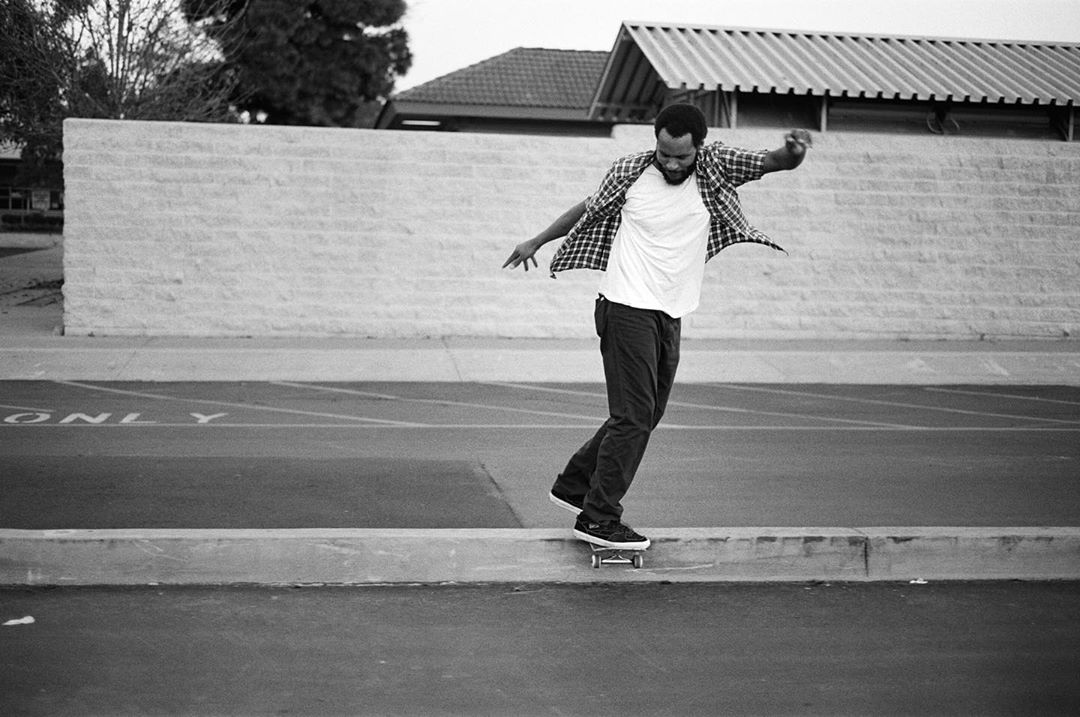
Yeah Natas, Mark and Tommy play a big part in street skating
Yeah but Mark was already old at the time, he was innovating from an even earlier stage.
What drew us further into skating in 84/85 when he was on Vision was his style, tricks and art and we were like, just like what! And the same with Natas, we were like what!
They were still innovating but they were already doing that from the first time we ever saw them so they were really a contrast from what they contributed to skating and the other skaters who they were skating with at the time. Their ideas were different to anybody else in skateboarding.
In 1982 through to 1987 their output showed the biggest gap in their ideas to what other people were doing in skateboarding, they already inspired the next generation that followed them, your Jason Lee’s, Ed Templeton’s, Jeremy Klein’s, Randy Colvins’, they showed us what could be done.
But then by the time Video Days come out the next generation, Guy Mariano, Rudy Johnson, Gabriel Rodriguez, Paulo Diaz, Gonz was inspiring them and it showed how ahead he is because he was still showing how innovative he is in that setting x amounts of generations later, that he played a part in bringing into the industry in the first place.
Do you have a favourite video from back then that inspired you to skate in the 80s like Savannah Slammah?
Yeah so back then, you had to piece it together a little bit, street skating was small, it was all vert, you had to ingest all the little pieces that would be in the mix of these other bigger videos that were dominated by vert.
It’s not like now where you can identify a thing, it was the celebration of all of these little things in a bigger thing, and it was like 80 percent vert, 10 percent street and 10 percent freestyle.
Even in the videos the little bit of street stuff was minimal.
That’s gnarly you had to look that hard.
Wasn’t searching, it was just the way you were taking it in , I’m not going to say it wasn’t gnarly and hard but it was a part of the process and it was all we knew. Seeing all of these little bits and seeing these photos in the mag and wrapping your head around them like, Dude, how did Natas get on that wall in that photo of him doing a wallride on that wall but then having to wait for the next month’s issue to see the sequence where you could realise that he actually ran and jumped on the wall did it make sense.
But then when I was going out in Sacramento and skating with my friends, I didn’t have to wonder, it was the same difference of going to a concert instead of listening to a mixtape, but what I’m trying to say is that the best times are going out to see things with your own eyes.
Going out to Sacramento with my friend Robert Torres and those guys allowing us to be a part of their skate community and not just anybody but older guys who are just rippers, and what people see in those people and what they meant to us, has way more to do with that than anything else.
So it wouldn’t be a video it would be visiting Sacramento and seeing those friends.
So you don’t have a favourite video?
Sorry, I might have misinterpreted your question, It’s not that I don’t have a favourite skate video sorry.
It’s just that if I think about what impacted my skating the most. Since I started skating and what has played the biggest role in the trajectory of my skateboarding is that.
I think that some people would tie in a favourite video part that gave them a huge leap toward their desire but I’m just saying but during that time between 1984 and 1985, Sacramento itself, played the biggest role in the trajectory of my skateboarding and it is everything I did from that time is the reason we are talking right now. It was then I had the opportunity to get sponsored in general, get on Powell Peralta and skate in those videos that allowed me to be around in skating to this day.
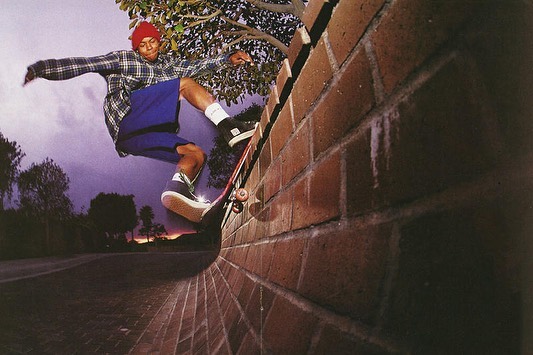
So what was it like filming Public Domain?
We only had three days and Stacey Peralta basically wanted it to look like it was all filmed in one day.
I remember we all had to wear the same stinky clothes every day for three days and back then filming was more like a jam session, you didn’t have much time to get your tricks, so if Stacey wanted to film you and you didn’t land it in the first five tries he’d move onto the next person and it was just like everybody skated and they’d go up to you and they’d film or ask you to do it again, you’d try it and they would just move on if you didn’t land it, you didn’t get that many chances.
I remember for three days I felt like I was in a contest, you had to be landing all of the time. Street skating during that time was just at the infant stages, tricks where at the point where you could be consistent and also be exciting and stuff but there’s no way that you could do that now, nowadays you need to work on it as so many ideas have been put out there.
Public Domain was my first video. I’d been filmed before that was my first big video.
Did you feel much pressure to get footage?
Pressure is great when I feel prepared I can harness the pressure and turn it into execution. It’s when you have pressure and you’re not prepared because that’s the battle. You don’t feel like you can do what you’re doing, you’re totally unprepared. There’s a difference. Pressure when your confident get harnessed in a good way but you’re not pressured its harnessed in a bad way.
Skating relies on the pressure and confidence to think you can do something.
Being organic and in the moment should be easy but it’s not! Your footage always looks natural though, especially in the Firm Video ‘Can’t Stop’. How did you put that together?
So it was our dear friend who we lost to a heart attack Kurt Hayashi, a lot of that was with Kurt and with Anthony Claravall and they were the main two filmers on that film.
Jon Humphries is a photographer and does film but only filmed Lance’s black and white section at the combi.
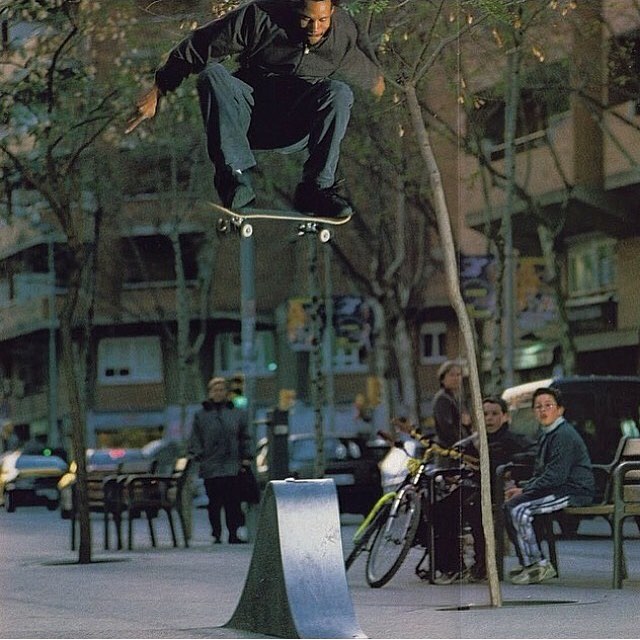
Yeah he shot photos in the skate house too
Yeah it was all of us together a lot of the time. A lot of that stuff was in Europe, out in Barcelona, and so yeah we had a whole crew it was super fun, a lot of the footage in my part is on Europe trips, Poland, Spain, we went to Rotterdam in Holland, that’s the brick hip. I did a Frontside 360 Heel over that one.
It would be Humphries or Claravall too. Kurt filmed all of Matt Beach’s part.
Sick. His Kickflip Tailslides on ledges were fucked up. Thinking about that video, you do that Frontside Heelflip over that picnic bench on flat, that was phat, how did that go down?
Yeah you know who filmed that? You ever heard of French Fred?
Yeah he’s a member?
Sick, yeah he filmed it at this schoolyard, we were skating with Geoff Rowley that day.
Rowley and Fred were filming for something that day I did it that day and he was like dude do it again and I filmed a second one with him. I was glad he asked me to do it again because it became a clip for the video.
I remember it was a fun spot because usually we skate a bump up to it and I remember thinking it was a fun hopping over that thing without needing a bump.
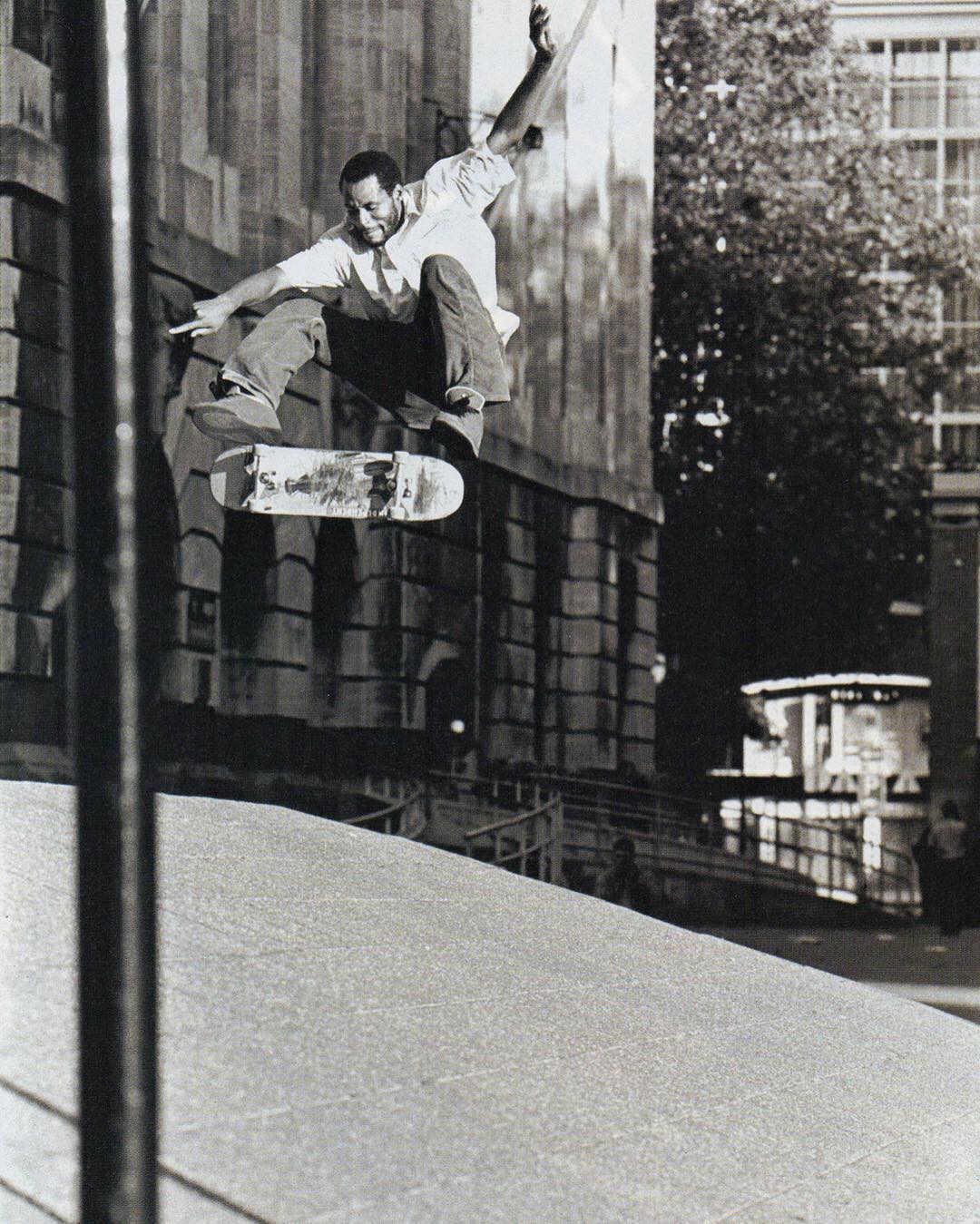
In that part, you do a backside 360 off a launch ramp, is that the same ledge you do the Propeller No Step Hop at?
No that’s another spot that Anthony Acosta turned me on to that!
No way, Anthony is a No Comply Network member too
Yeah Acosta took me there; it was the first time he took me there.
Yeah it’s a similar spot.
Oh dude, the one you’re talking about is bigger
I remember going the other way for an Independent poster and I did a Frontside Flip.
If you go the other way, it goes over a gap to the sidewalk and the way I went with a backside 360, that way sends you into a parking lot and then if you go the other way it sends you over the sidewalk that led into the street. I’m not sure if it’s there anymore.
Yeah it’s a different one, the Propeller spot is smaller. Yeah what I liked about that spot is the kicker was a good spot to learn that trick and give me that lift that I needed.
That whole part is filled with tricks that are creative. What do you think about the recent resurgence of No Complys?
It’s really interesting with Instagram even a few years ago, about No Complys, what I call Step Hops and what some people call 43’s.
There’s been such a resurgence of them, even two years; all I saw on Instagram was them. It’s been a trick that’s been dormant for a long time and the generation now have just found out about and bring a progression to it and different ideas and variations and it was the same thing we did with Randy and with his No Comply.
Yeah innovation never stops
I see the craziest stuff, especially on transition, like Janoski at the Nike park he did this one No Comply on the quarterpipe, I was like what the hell!?
It’s really cool that tricks will have lifespan and there’s certain tricks you kind of can’t rule any trick out. I used to think that pressure flips and certain other tricks have become played out, gimmicky, everybody hops on them, it’s like a song, it’s like a one hit wonder and then people are like whatever…
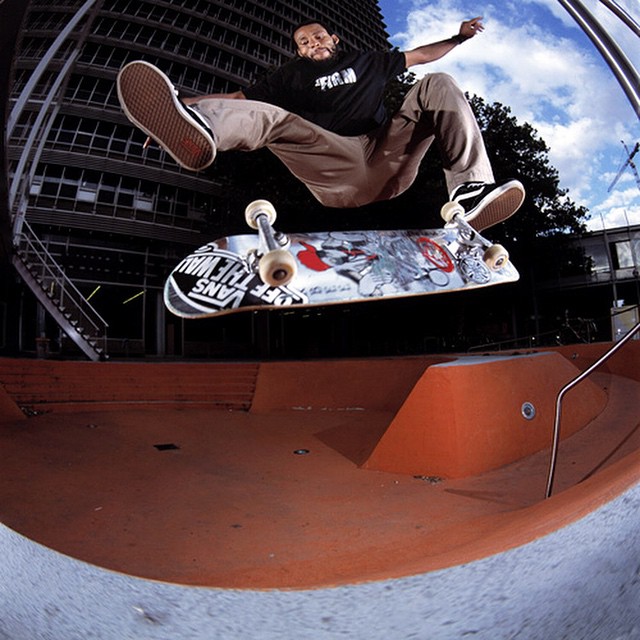
Yeah like body varials
Yeah but you can’t ever rule any of that stuff out, it just takes the right person to make it cool and everyone will hop on it again. I don’t think we’re going to see pressure flips again but now I’m like all of a sudden here’s a new wave of pressure flips and everyone starts taking them to a new different level.
Tricks that I think are dormant won’t die, they’ll just come back. I want to say Step Hops went through the same thing so it was cool to see them coming back through the new generation because obviously I’m biased towards it and it’s been really cool to see its heavy resurgence.
I’ve seen a lot of new people do new variations that are seriously surprising.
Yeah Kento Yoshioka is taking stuff to a new level, he’s doing No Complys in a different way that ‘shuvs’ the rule book.
That’s what variations are, they are just ideas tagged on to ideas, so Kento is just building ideas on to others that he saw.
Agreed. Thanks for sharing that Ray. So have you been making much music during lockdown?
Yeah I have been, I’ve been playing a bunch and actually Vans hit me up to make some music for a big campaign they are working on called ‘Thank You’ and so that was really fun to work with the producers and directors to create the song that will score the campaign.
Rad, are you working on any other new music projects lately?
I’m part of a podcast compilation called Comfort Month.
I did a song with some friends, we covered this band called Dose, which is my friend called Mike Watt, he used to play in The Minutemen and Firehose and he’s got three bands now, so yeah, I’ve been keeping busy and making a lot of music with friends.
That all happened during the quarantine.
Sounds good, can’t wait to hear it, any last words to people stuck out there in Lockdown?
Hang tight everybody it’s a heavy time right now!

